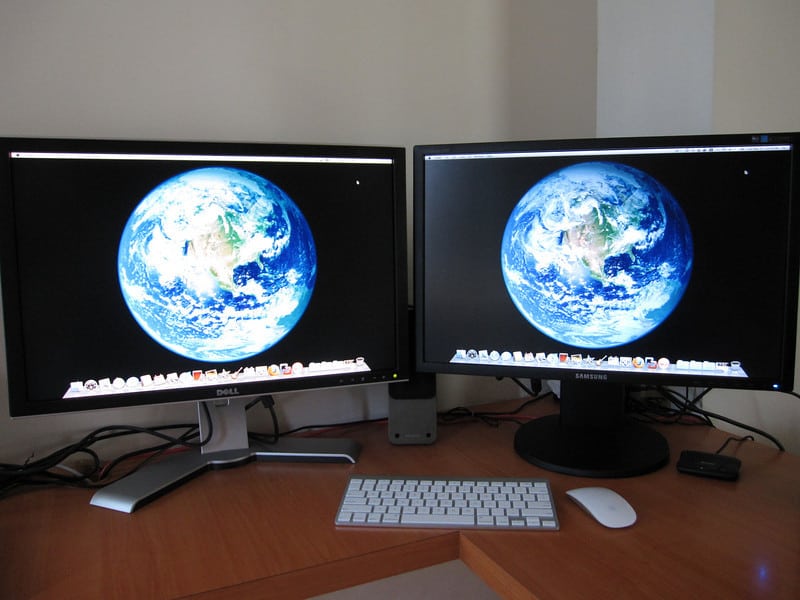
- #Mac move desktop to different monitor how to
- #Mac move desktop to different monitor 1080p
- #Mac move desktop to different monitor manual
- #Mac move desktop to different monitor software
In our case, we have both HDMI and DisplayPort support on our laptop. Step 2: Connect Display Cable to Monitor & Laptop For people with 4K displays, consider this $55 StarTech dock, which lets you add two extra monitors to your machine.
#Mac move desktop to different monitor 1080p
You can buy a USB-A to HDMI adapter such as this one! It costs just $16 on Amazon and supports 1080p output. If so, you can buy a Type-C to HDMI adapter, such as this one from Anker ( $17.99 on Amazon).įinally, if your laptop does not have a Type-C port, we have the perfect solution for you too.
#Mac move desktop to different monitor manual
Refer to your laptop’s manual to confirm this. If you don’t have additional ports, you need to check if the Type-C port on your laptop supports display output or not. While modern PCs and laptops include multiple display ports, some only have one extra port on their laptop. To set up a dual monitor on your laptop, you first need to check what display ports you have in your laptop. Step 1: Check the Display Ports on Your Laptop But for that, you need more than one display output port on your Windows laptop, so check if your Type-C port supports it or not. Or if you want, you can connect two monitors to your laptop.
#Mac move desktop to different monitor how to
How to Set up Dual Monitors with Your Laptopįor a dual monitor setup on your laptop, you only need to plug in one additional monitor and use it together with your laptop screen. The process remains pretty much the same on your Windows laptop, but there are a few caveats, so let’s have a look at the steps below. Voila! You have successfully set up dual monitors to work with your Windows desktop.

Note: In case plugging your monitor into the motherboard’s back I/O panel does not work, you might have to enter the BIOS on your Windows PC and enable the integrated GPU from there. You can also select other options to show one monitor or duplicate the displays. Now, use the “ Windows + P” keyboard shortcut and select Extend, which will enable a multi-monitor workflow on your PC. Turn on your PC and when inside Windows both your monitors should be detected. Step 3: Manage Your Dual Displays in Windows
#Mac move desktop to different monitor software
However, ensure you run GPU-heavy programs such as games & content creation software on the monitor connected to your dedicated GPU for optimal performance. Note: The video output ports on the motherboard’s back I/O can be used together with the video outputs on your dedicated graphics card to plug in even more monitors. And then you can set up dual or more monitors on your Windows PC. I suspect I chose a keyboard shortcut that was already in use somewhere else.If you don’t have a dedicated graphics card and only have a single display output port on your desktop’s motherboard back I/O panel, you will need an adapter to add another display output port to your PC and then you can plug in additional monitors. When I first did this, the shortcut didn't work. To get the screen names, you'll need to move applications to each screen and see what the menu item changes to and then create a shortcut for that screen.

You will need to do the steps above to create a shortcut for each screen you have. If you did this successfully, you should now see the shortcut appear next to the menu item and using your keyboard should moved the window to the other screen.

Set the keyboard shortcut you want to use Set Menu Title to exactly the menu item wording you found above Open keyboard settings (System preferences -> Keyboard). Here's how:įind the name of the menu item you want to create a shortcut for:Ĭlick Window in any application and look for a menu item that says "Move to " But there's hope! Using keyboard shortcuts, you can create your own shortcuts to move windows between screens. It does not have a keyboard shortcut though which is what I was looking for. There is a menu item that you can use to move apps between screens. Building on the answer above, using native Mac controls.


 0 kommentar(er)
0 kommentar(er)
